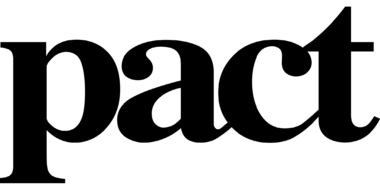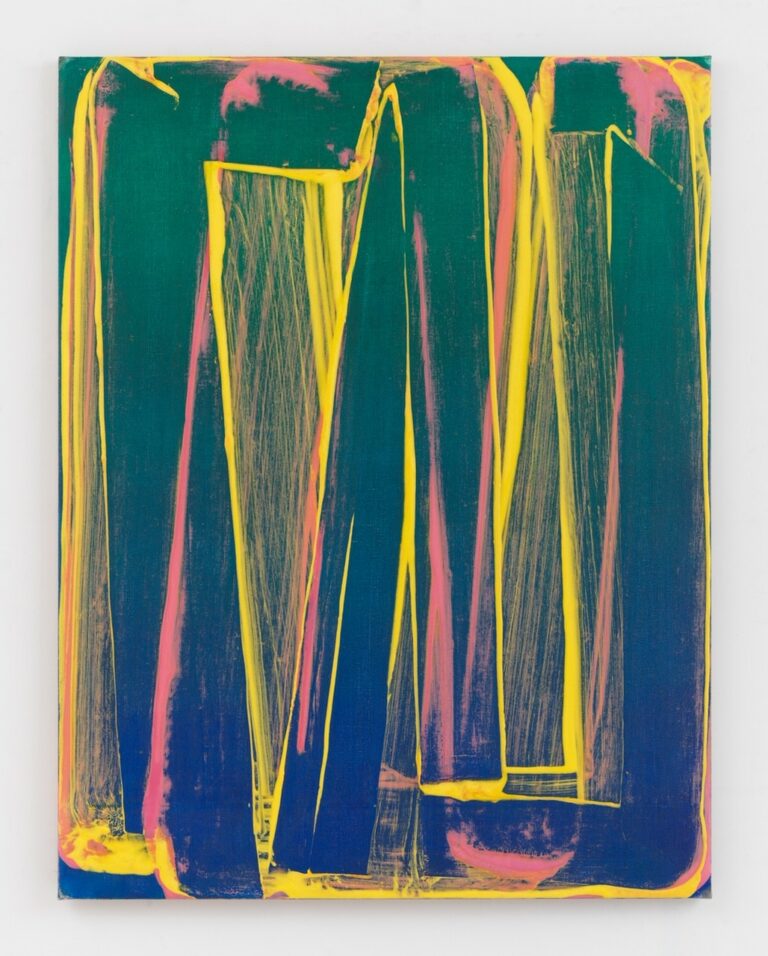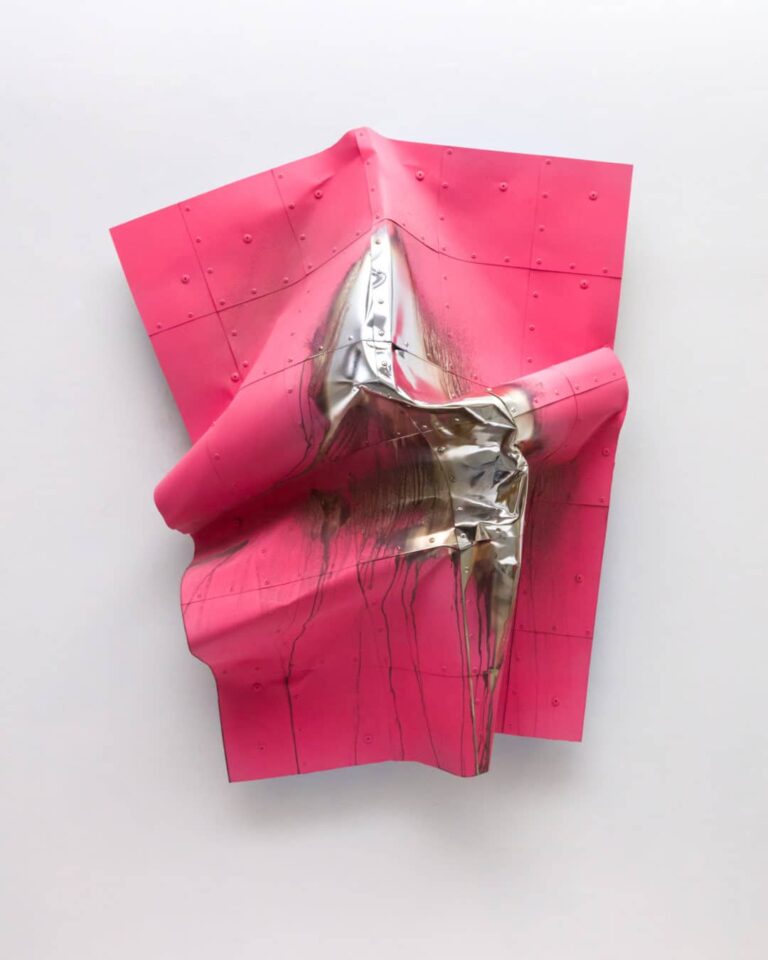Dorian Gaudin, Robert Janitz
Elle & Lui
January 9 - March 7, 2020
Three is already a repetition. Three is the minimum number needed to identify a motif, a pattern. With three, the human tendency to classify is set in motion. Now more than ever, it seems increasingly possible to order the world by a process of aggregation. Artificial neural networks are taught to recognise categories, to reduce peculiarities to immediately identifiable general characteristics. By seeking to make everyday life readable to artificial intelligence, we limit ourselves to the mere recognition of its features – a streetlamp, a car, a human being are reduced to their simplified, archetypal images. Any roughness around the edges, associated precisely with the proliferating movement of the living and the occurring, is thus smoothed over, erased.
Two, on the other hand, leaves open the possibility of endless deliberation. Two is an unstable equilibrium, a game of see-saw, a scattering. It is a destinerrance, as Jacques Derrida writes in La Doublure (1972), where at the start of all things we find a perpetual movement he calls dédoublement. The binary, the double-sided, the tail of the comet without the comet. A long tail, we might have said, had the term not been co-opted by the economic lexicon. This duality, safe from the outset from the impulses of recognition, analysis and prediction, is precisely what Dorian Gaudin and Robert Janitz evoke for their joint exhibition at PACT. Even the title is a decoy, designed to thwart too hasty an identification of subjects. Elle & Lui refers to no-one in particular. We must focus not on the pronouns but on the movable hinge that is the connecting symbol: that is where the creative energy lies.
Let’s randomly label one artist’s collection “elle” and the other’s “lui”. Against two walls of the gallery where the works are displayed, different components of the two ensembles meet, clash, provoke each other, join forces and respond to one another. Some works are “typical Gaudin” (the mechanical arm, the crumpled aluminium sculpture) while others are “typical Janitz” (the two paintings, the plant made of sheet steel). And then the highlight: the gushing fountain, the only work co-signed by both artists, its never-ending flow telling us about the nature of their ties to one another: “a playful yet precise energy”, to use their own words. Some of the artworks are stationary, others are moving, each one begetting the next. Displayed in a frieze, the whole collection reads like a musical score, a sentence, a chain reaction. While the recognition of patterns is artificial intelligence’s way of generating meaning, the construction of a sequence remains that of the simple human mind.
Elle & Lui above all embodies a friendship between artists. The two met six or seven years ago in New York, their city of choice. There, they spent time together, played backgammon, exchanged or bought artworks. In that respect, the collaboration between Dorian Gaudin and Robert Janitz lies not so much in the creation of art as in the creation of a context. At first glance, nothing would incline one to combine these two collections. The artists are from different generations, and indeed work in different mediums: one in sculpture, the other in painting. Once inserted into a sequence, the origins and internal logic of each artwork are blanked out, blurred. It is time spent together, subjective, unproductive time, time that cannot be measured, that allows the artworks to co-exist. They are combined through lyrical and skilfully executed associations, innocent or contrived, formal equivalents of a quick and fleeting flash of acuity – transformed into a link, be it presentational or mechanical.
The exhibition gives rise to an unusual, polysemic discursive space. One has the impression that meaning is in danger of tragicomic collapse at any moment, and that interpretation is a balancing act to be embarked upon at one’s own risk and peril. Implicitly, the exhibition reveals how expectations for objective taxonomies are not only illusory, but also detrimental. While artificial intelligence reduces all living things to objects, the exhibition of Dorian Gaudin and Robert Janitz does the opposite: here, each artwork is just as singular, plural, unpredictable and mobile as living beings themselves.
Ingrid Luquet-Gad // Art critic member of the AICA, journalist (Les Inrocks, Artforum, Art Press, Le Quotidien de l’Art, La Dispute sur France Culture)
Trois, c’est déjà une récurrence. Trois, c’est le minimum pour identifier un motif, un « pattern ». Trois, c’est la mise en branle de la marotte classificatoire de l’humain. Or plus que jamais, il semblerait que tout concoure à augmenter la possibilité d’ordonner le monde selon une logique d’agrégation. Aux réseaux de neurones artificiels est ainsi enseignée la capacité à reconnaître des catégories, à réduire la particularité à des caractéristiques générales immédiatement identifiables. En cherchant à le rendre lisible par des intelligences artificielles, le quotidien se retrouve réduit à la reconnaissance du même – un lampadaire, une voiture, un humain se retrouvent réduits à leur image simplifiée, archétypale. Toute aspérité qui, précisément, relèverait du mouvement proliférant du vivant et de l’événement est alors lissée, gommée.
Deux, au contraire, pose la possibilité d’une renégociation permanente. Deux, c’est l’équilibre instable, le jeu de bascule, la dissémination. C’est une « destinerrance », comme l’écrit Jacques Derrida dans La Doublure (1972), plaçant au commencement de toutes choses un mouvement perpétuel qu’il appelle dédoublement. Le binaire, le biface, c’est la queue de la comète sans la comète. Une longue traîne, aurait-on également pu dire, si le mot n’eût déjà été coopté par le champ lexical économique. Cette dualité-là, d’emblée soustraite aux velléités de reconnaissance, d’analyse et de prédiction, est précisément celle que convoquent Dorian Gaudin et Robert Janitz pour leur duo show à la galerie PACT. Le titre lui-même est un leurre, visant à faire dérailler les identifications trop hâtives. Elle & Lui ne désigne personne en particulier. Plutôt qu’aux pronoms, c’est à la charnière mobile du connecteur qu’il faut prêter attention, où s’annonce déjà la mise en tension productive.
Appelons alors arbitrairement « elle » le corpus de l’un des artistes, et « lui » celui de l’autre. Sur les deux murs de la galerie où se déploie la proposition, différents éléments issus de chacun de ces deux ensembles respectifs se rencontrent, se confrontent, se provoquent, s’allient et se répondent. Il y a des pièces « typiquement Gaudin » (le bras mécanique, la sculpture en aluminium froissé) et des pièces « typiquement Janitz » (les deux tableaux, la plante en tôle en acier). Et puis, en guise de point d’orgue, cette fontaine éruptive, la seule co-signée par les deux artistes, dont l’écoulement perpétuel renseigne sur la nature de la relation qui les unit : « une énergie ludique mais précise », pour reprendre les termes des intéressés. Certaines des œuvres sont fixes, d’autres en mouvement, chacune appelant la suivante. Accroché en frise, l’ensemble se lit comme une partition musicale, une phrase, ou bien une réaction en chaîne. Si la reconnaissance de motifs est le mode de production de sens de l’intelligence artificielle, la construction d’une séquence reste celui de l’esprit humain, simplement humain.
Elle & Lui matérialise avant tout une amitié d’artistes. L’un et l’autre se rencontrent il y a six ou sept ans à New York, leur ville élective. Là, ils passent du temps ensemble, jouent au backgammon, s’échangent ou s’achètent des œuvres. A ce titre, la collaboration de Dorian Gaudin et de Robert Janitz ne se situe pas tant dans la production de pièces que dans celle d’un contexte. A priori, rien ne prédisposerait en effet à rapprocher ces deux corpus. Les deux artistes sont issus de générations différentes, et ils oeuvrent dans des médiums qui le sont également : la sculpture pour l’un, la peinture pour l’autre. Une fois insérées dans la séquence, les origines et les logiques internes de chaque œuvre se retrouvent barrées, brouillées. C’est le temps passé ensemble, un temps subjectif, improductif, hors de la mesure comptable, qui permet de faire exister ensemble les œuvres. Les rapprochements s’effectuent par des associations lyriques et enlevées, naïves ou tirées par les cheveux, autant d’équivalents formels du surgissement fulgurant et fugace d’un trait d’esprit – transformé en trait d’union, formel ou mécanique.
Par l’accrochage émerge un espace discursif singulier et polysémique. La signification apparaît à chaque instant en péril de dégringolade tragicomique, et l’interprétation, un exercice d’équilibriste à entreprendre à ses risques et périls. En creux, l’exposition révèle combien toute prétention aux taxonomies objectives est non seulement illusoire, mais également appauvrissante. Alors que l’intelligence artificielle réduit tout vivant à de l’objet, l’accrochage de Dorian Gaudin et Robert Janitz effectue ici le trajet inverse : ici, chaque œuvre apparaît aussi singulière, plurielle, imprévisible, mobile que l’est le vivant lui-même.
Ingrid Luquet-Gad // Critique d’art membre de l’AICA, journaliste (Les Inrocks, Artforum, Art Press, Le Quotidien de l’Art, La Dispute sur France Culture)









